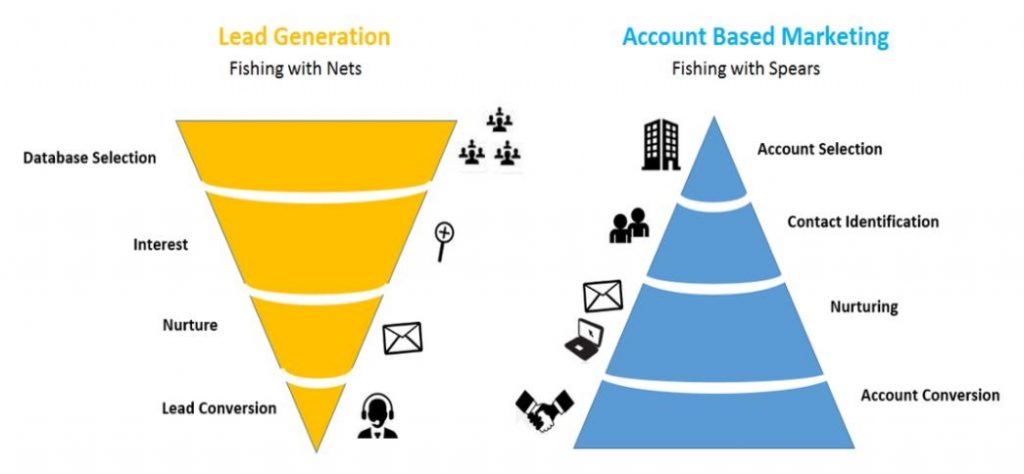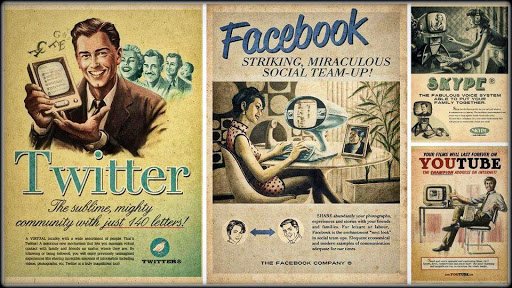Despite so many innovations in marketing, B2B marketing still happens to be one of the most laborious marketing practices of all. Traditionally, B2B marketing has relied on certain strategies that still work well with small and mid-market prospects.
When targeting marketing efforts toward enterprises (or high-ticket B2B clients), this strategy hits a wall. Now, they have to influence not a single buyer, but a team of buyers. Their goal is to generate a target number of marketing-qualified leads and pass them on to Sales.
This feature column explores if the legacy-based B2B marketing strategy is the only way or if better options are available to marketing teams of large enterprises.
Traditional B2B marketing strategies have a blind spot
When an enterprise has so much at stake while looking for a solution, it is obvious that they would spend time reviewing solution providers and their offered solutions. Their contracts also often tend to be specialized solutions. Enterprises, also, often have a procurement team to explore and examine potential solution providers that will deliver a fruitful partnership.
If you cater to enterprises, a standard-solution approach to marketing is not enough. You have to appeal to each of their team members individually.
Also, not each of them plays the same role. There are 4 types of leads you might encounter when trying to close an enterprise account:
- Gatekeeper: Usually the executive assistant to the decision-maker, responsible for giving access to the decision-makers.
- Influencer: Researches and collects options. They may not directly have any authority to dictate purchase but decision-makers rely on the assessment of influencers.
- Decision maker: The C-suite executive initiating and directing the whole process on the client-side. They have the full authority to make independent decisions based on their judgments and instincts.
- Blocker: They are influencers who select by rejection. Find someone else in the team to take the conversation to a genuine conclusion.
In short, everyone in their team has different priorities!
Traditional B2B marketing strategies include prospecting and lead nurturing through email, B2B conferences and events, cold calling, Twitter/LinkedIn/Facebook/Quora outreach, and webinars. Thus, B2B marketers offer standard, non-personalized solutions to these prospects without customizations using a generic approach.
Ironically, B2B marketers use the same traditional techniques to target all types of leads within the enterprise/high-ticket B2B prospect companies.
These strategies do not work because:
- There’s no filtering of the right kind of high-ticket leads.
- There’s no plan of action to help the Sales team close these high-ticket leads quickly.
- If Marketing has some key information that would help Sales during the closing, a lack of alignment between the two teams creates an information silo and prevents an expedited closing of the deal.
Here are some more, but not all, the disadvantages of using traditional B2B marketing to target enterprise prospects.
A lack of an account-specific personalization strategy
The most essential fact of B2B marketing or sales is this: In the end, you are still talking to human beings. They’re not businesses and therefore they need a personalized approach.

Every enterprise has a different need.
For example, an AI-based sales intelligence company might have a requirement that is totally different from a home appliances company. If you sell SaaS software to both, you have to recognize their individual needs. Certainly, a home appliance company would not find relevance if you used stats about the impact of AI on sales.
B2B marketing ends up becoming a one-size-fits-all approach. You won’t impress everyone and will most certainly turn a few people off. It’s like saying “Whatever your requirement is, this is what we offer and we think this will help you achieve your business goals”. It makes your company sound like an amateur.
But those buying from you within enterprises are not amateurs – and they are not going to buy from amateurs. They’re experts in their fields. And they outnumber you.
This means your marketing strategy for enterprises has to have personalization at scale for your content to have any chance of connecting with them.

Creativity and Storytelling expert Jonah Sachs on Personalization (Source: azquotes.com).
A lower return on investment for your marketing efforts
To achieve $500,000 in forecasted sales, you can market to a list of 200 leads and hope that at least 20 of them bring you a business of at least $50,000 each. This conversion rate of 10% means their marketing efforts have to succeed exceptionally since the average conversion rate on landing pages is a mere 2.35%.
Let’s assume you aim for a more conservative conversion rate of 5%. That means you have to convert 10 leads and hope that your Sales team doesn’t drop the ball on any of them to bring in a $500,000 billing.
Alternatively, you can hyper-target and choose 3-5 big accounts, each with a billing of $500,000 or more. Single conversion from this hyper-targeted list will fetch you a $500,000 billing in this case.
This second strategy goes top-down:
- First, find prospects (i.e. enterprises) whose business is lucrative enough to you (minimum $500,000 for this example)
- Individually target each decision-making member of their teams with personalized marketing messages. Since they are a part of the same company, it reduces their marketing efforts.
- Coordinate tightly with Sales and create content that empowers them to close the sale quickly.
This second strategy is called Account-based Marketing (ABM) and it’s the key to closing large, enterprise-level accounts.
A brief intro of Account-based Marketing (ABM)
ABM is a process meant to acquire and retain large accounts in the long-term – on scales of years and decades. The job of an account-based marketer doesn’t end with generating marketing-qualified leads. They will work toward the goal of building and maintaining long-term relationships that lead to new engagements.
The ABM process broadly goes like this:
- Identify successful companies with potentially large billing in a specific sector.
- Use personalized content campaigns to engage with them and gather essential data.
- Campaigns mature and lead to relationships with high-level decision-makers.
- Marketers working on these chosen accounts will align closely with the Sales team and help them close the sale on that account.

A visual comparison of traditional B2B prospecting vs ABM (Source: Medium.com / Sonish Sivarajkumar)
The ABM team will not focus on any other accounts except these specific accounts throughout the process. Because ABM is highly resource-intensive, it’s followed for a small number of highly profitable accounts. This strategy is not meant for smaller accounts as it may cause wastage of resources.
How to apply Account-based Marketing
To apply Account-based Marketing, we must find the right mix of B2B marketing strategies that will be useful to target high-ticket accounts and adapt those strategies for those high-ticket accounts.
Here is an example of how to actually do it.
Get the target accounts into your fold with educational content
Educational content is a proven way to attract inbound leads into your funnel.
But with ABM, you cannot target a whole bunch of leads with generic content. Instead, you write to acknowledge those specific companies that you want to do business with.
For example, if a B2B marketing automation tool (say, MA) wanted to do business with several real estate companies, they would identify one highly profitable company in that sector (say, REC).
Then they would write a blog post targeting the common block of both audiences.
This post would mention how the REC already does so well with their marketing and how a marketing automation tool could help them do better.
Finally, they could promote this article on Twitter, hyper-target it to the decision-making team of REC and those that influence that team.
As a result, this brings MA into the focus of the senior-most officials in REC. It kicks the relationship off on a great positive note. Any upcoming marketing material also hyper-targeted to the same group within REC will receive a more favorable response and kick the relationship with MA into the next gear.
Why ABM is a must-use strategy for high-ticket B2B accounts
The first key to success with ABM starts by narrowing your field of vision. Find companies with whom you want to work with. These could be to develop lucrative partnerships or because a partnership with them adds to your brand value.
The second key to success with ABM is to find the right long-term for your marketing communication. Account-based marketing is about building long-term relationships that generate partnerships from specific high-ticket B2B prospects. In doing so, the alignment, cooperation, and coordination between the Marketing and Sales team must be very high.





